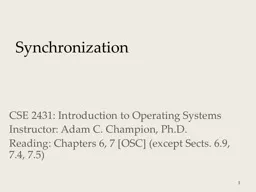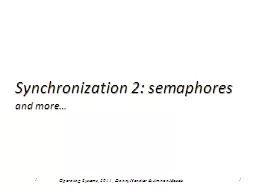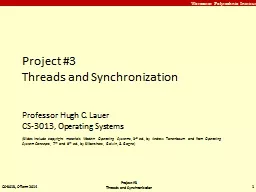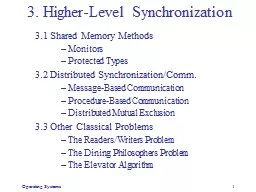PPT-Synchronization 1 CSE 2431: Introduction to Operating Systems
Author : tatyana-admore | Published Date : 2019-12-21
Synchronization 1 CSE 2431 Introduction to Operating Systems Instructor Adam C Champion PhD Reading Chapters 6 7 OSC except Sects 69 74 75 Outline Critical region
Presentation Embed Code
Download Presentation
Download Presentation The PPT/PDF document "Synchronization 1 CSE 2431: Introduction..." is the property of its rightful owner. Permission is granted to download and print the materials on this website for personal, non-commercial use only, and to display it on your personal computer provided you do not modify the materials and that you retain all copyright notices contained in the materials. By downloading content from our website, you accept the terms of this agreement.
Synchronization 1 CSE 2431: Introduction to Operating Systems: Transcript
Download Rules Of Document
"Synchronization 1 CSE 2431: Introduction to Operating Systems"The content belongs to its owner. You may download and print it for personal use, without modification, and keep all copyright notices. By downloading, you agree to these terms.
Related Documents














